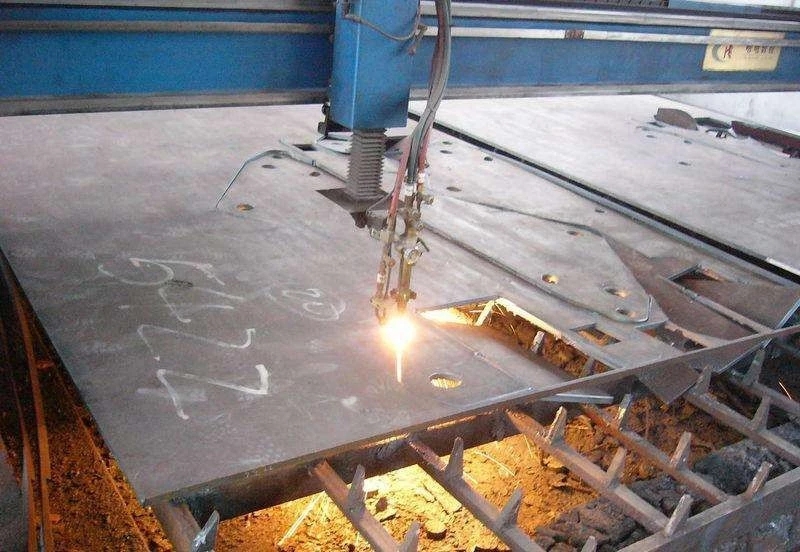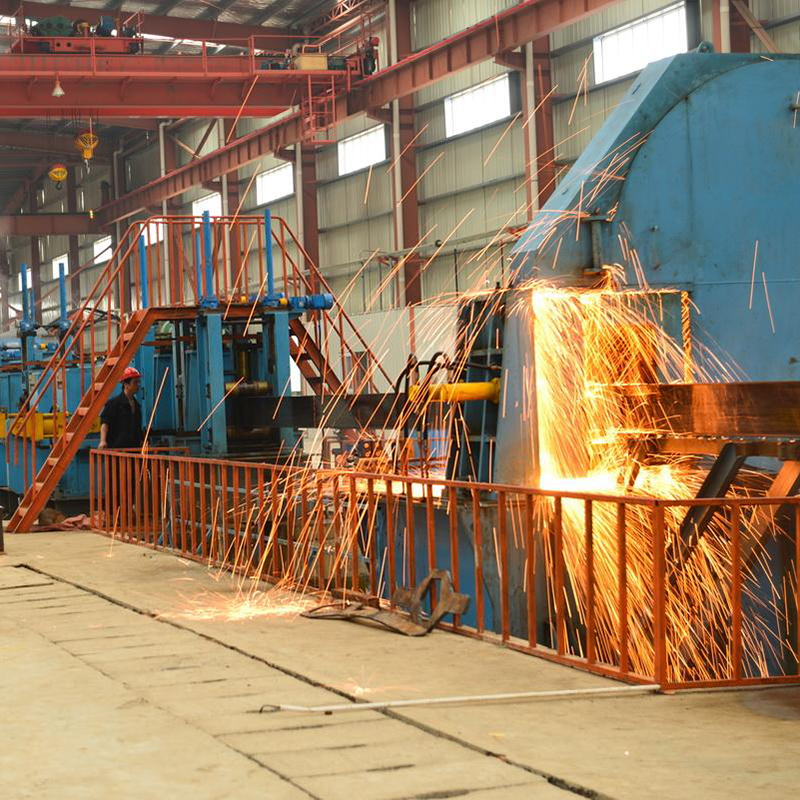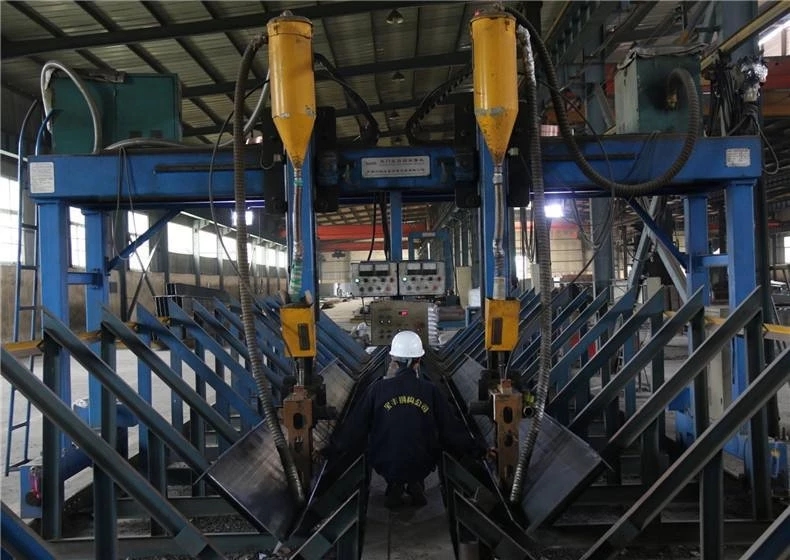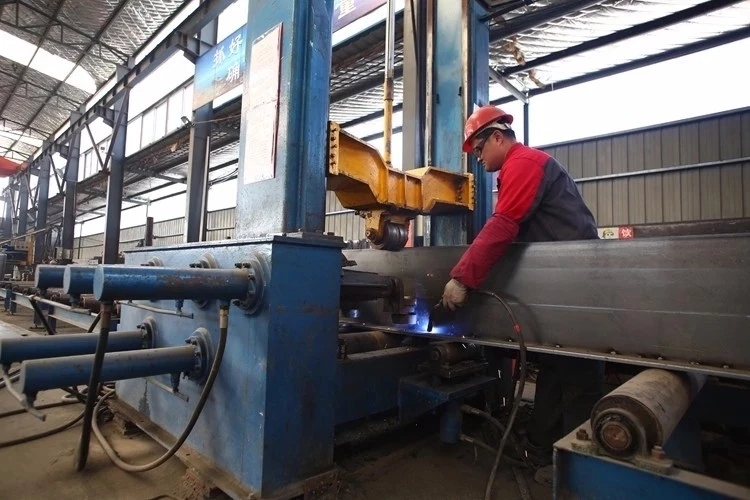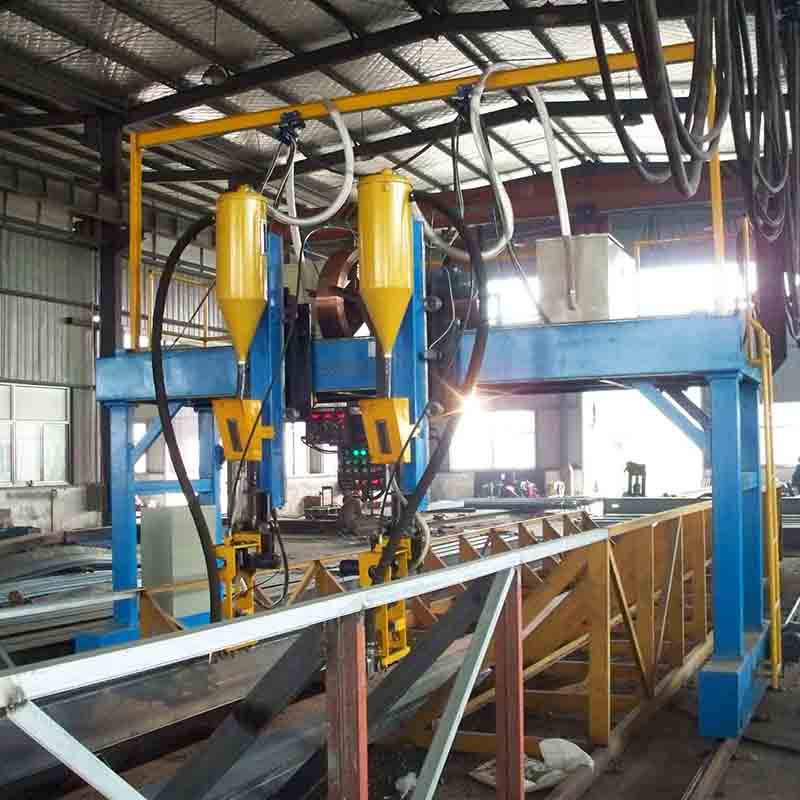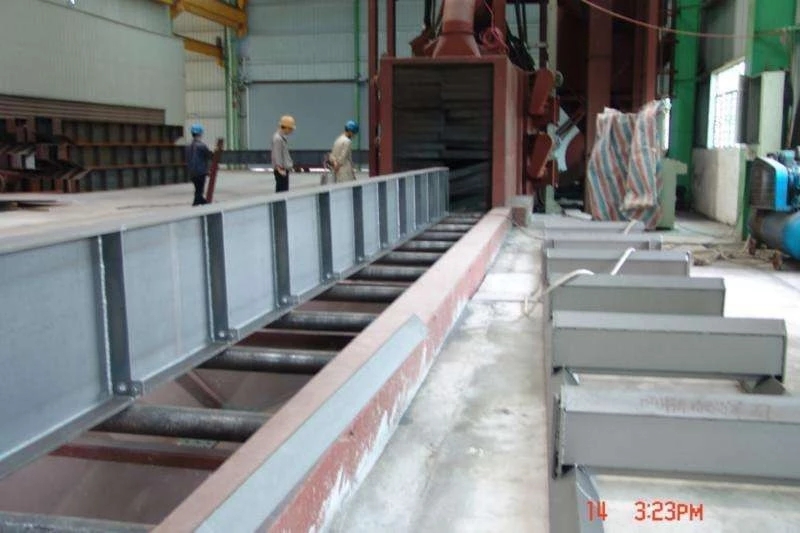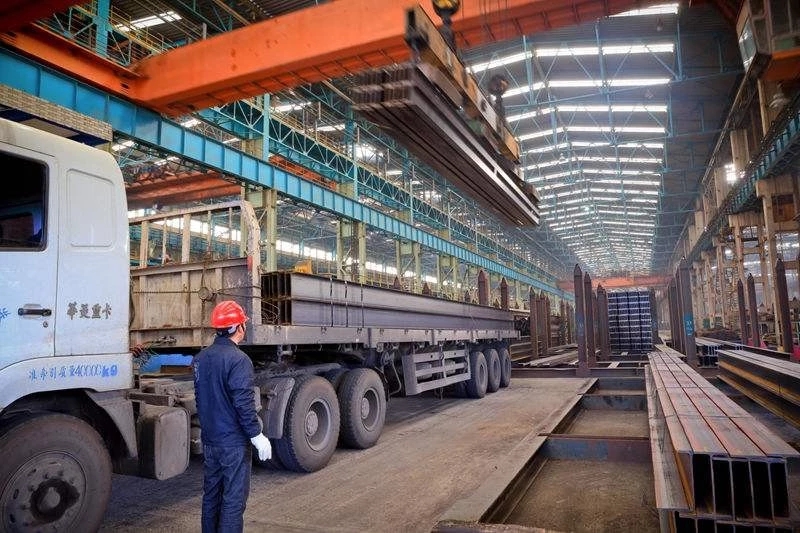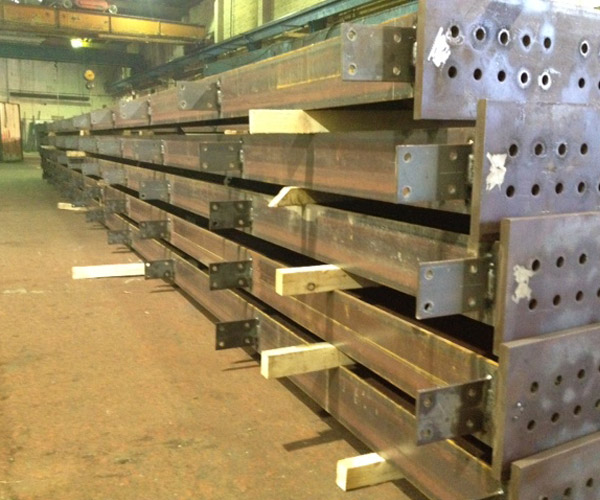1.Cutting and blanking of steel structure materials
When cutting and blanking, the width of flange plate is not the same, resulting in the size of H-shaped steel and bracket is not the same, and the upper and lower flange plates of the steel beam connected with bracket are about one plate thickness staggered; the cutting edge has deep cutting marks, obvious depressions on the plate edge, or deep saw tooth marks, the cutting roughness exceeds the standard, the cutting edge of panel is not vertical, and the splicing edge is staggered.
2. assembly of steel structure components
During assembly, there is no assembly jig for welding H steel, resulting in deviation of H steel height and dimension and deviation of web from center; after butt joint of wing and web, the weld is not leveled and there is obvious concave convex; light steel web is not leveled and not corrected before assembly.
3.Steel structure welding
In terms of welding, H-shaped steel wing plate is welded by light steel and then spliced after cutting. Arc striking and extinguishing plate is not installed on the weld seam, resulting in incomplete weld seam, incomplete pit on the edge, etc., which is not flush with the base metal; the weld foot size of column foot and bracket is smaller than the provisions of the design drawing, and the corner weld is severely collapsed, the arc stopping place is generally lower than the base metal, with many pores; the weld seam with CO2 welding is poorly formed, with different width and width.As a result, the height is inconsistent, sometimes big or small; the manual welding seam is not straight, the width is different, and the undercut is serious; the welding slag splashing is not removed.
4Steel structure drilling
In the aspect of drilling, the drawings were not well reviewed in advance. In the place where a single row of holes was opened, a double row of holes was opened. As a result, the holes were left on the components without patching.For example, the H-shaped steel at the connection of column and bracket is double row hole, while the H-shaped steel with the same specification of girder and secondary beam is single row hole, but double row holes are opened when opening, which affects the strength and appearance quality after installation.
5. steel structure assembly process
During the general assembly process, the connection between the steel column bracket and H-shaped steel beam is staggered up and down, left and right, and the size is not well controlled
6.Steel structure rust removal and painting
Shot blasting and painting: Shot blasting is sloppy and does not meet the grade requirements, and the paint will return to rust and peel off soon; the film thickness is uneven, and the thickness of the external surface is generally super thick, up to 250 μ m, but the negative surface is often about 90 μ m (the thickness of the indoor film is specified as 125 μ m); before painting, impurities are not removed, there are many dirt, uneven, and sagging phenomenon is common.
7. steel structure construction, transportation and storage
In the process of component transportation and stacking, the components are unloaded at will, stacked in disorder, even buried in the mud pile ditch, causing component deformation, bruise and pollution.
8. delivery of steel structure components
When the components leave the factory, the center line marks of steel columns and steel beams are not marked, which is quite common, bringing difficulties to the installation, construction and correction detection.
9. splicing of steel structure wing and Web
The splicing length of wing web does not meet the requirements.If the splicing length of flange plate shall not be less than 2 times of the width of flange plate, the splicing weld between flange plate and web plate shall be staggered for more than 200mm, and the splicing length of web plate shall not be less than 600mm.However, the above requirements are often not met in practice.
Post time: Jun-02-2020

